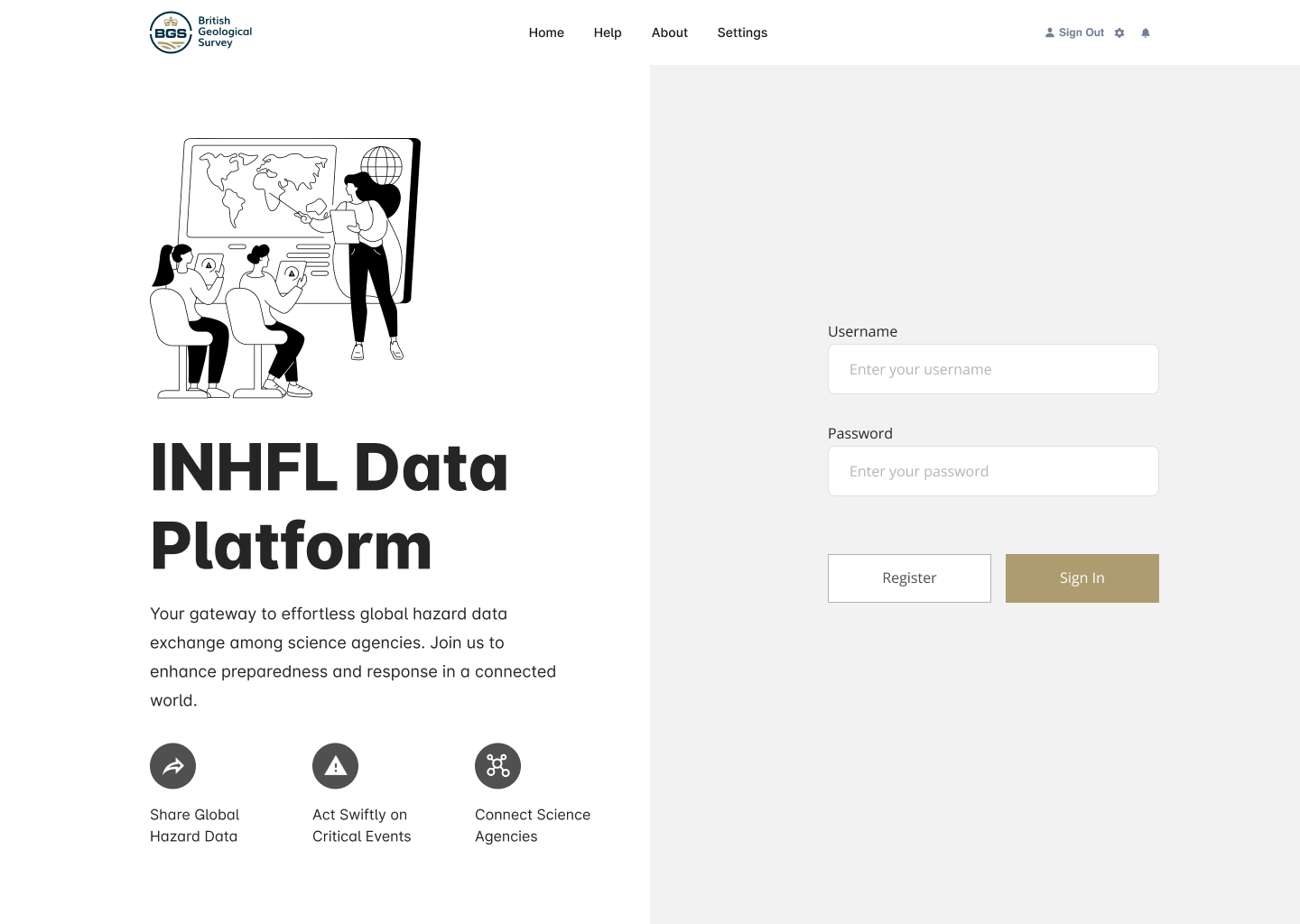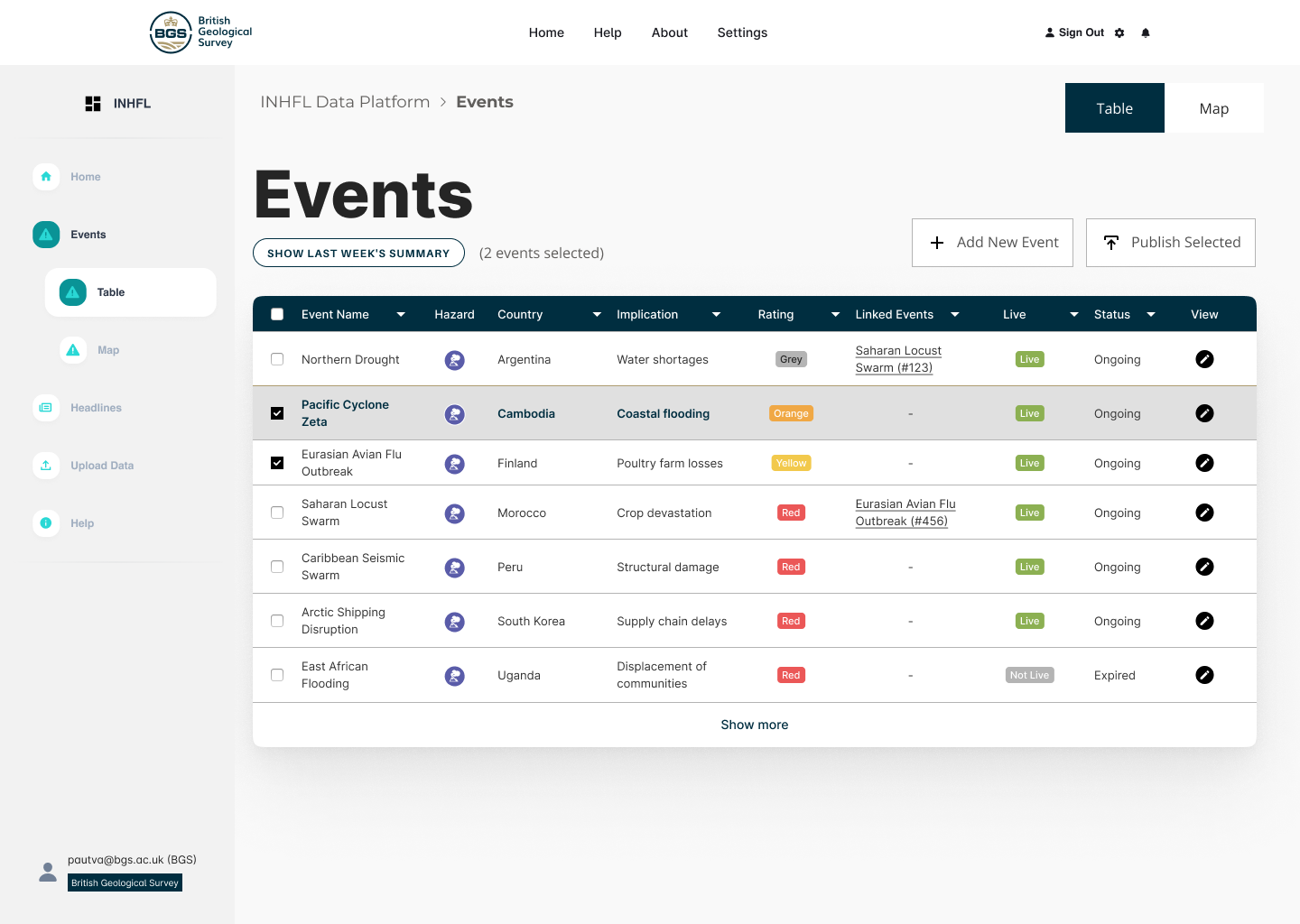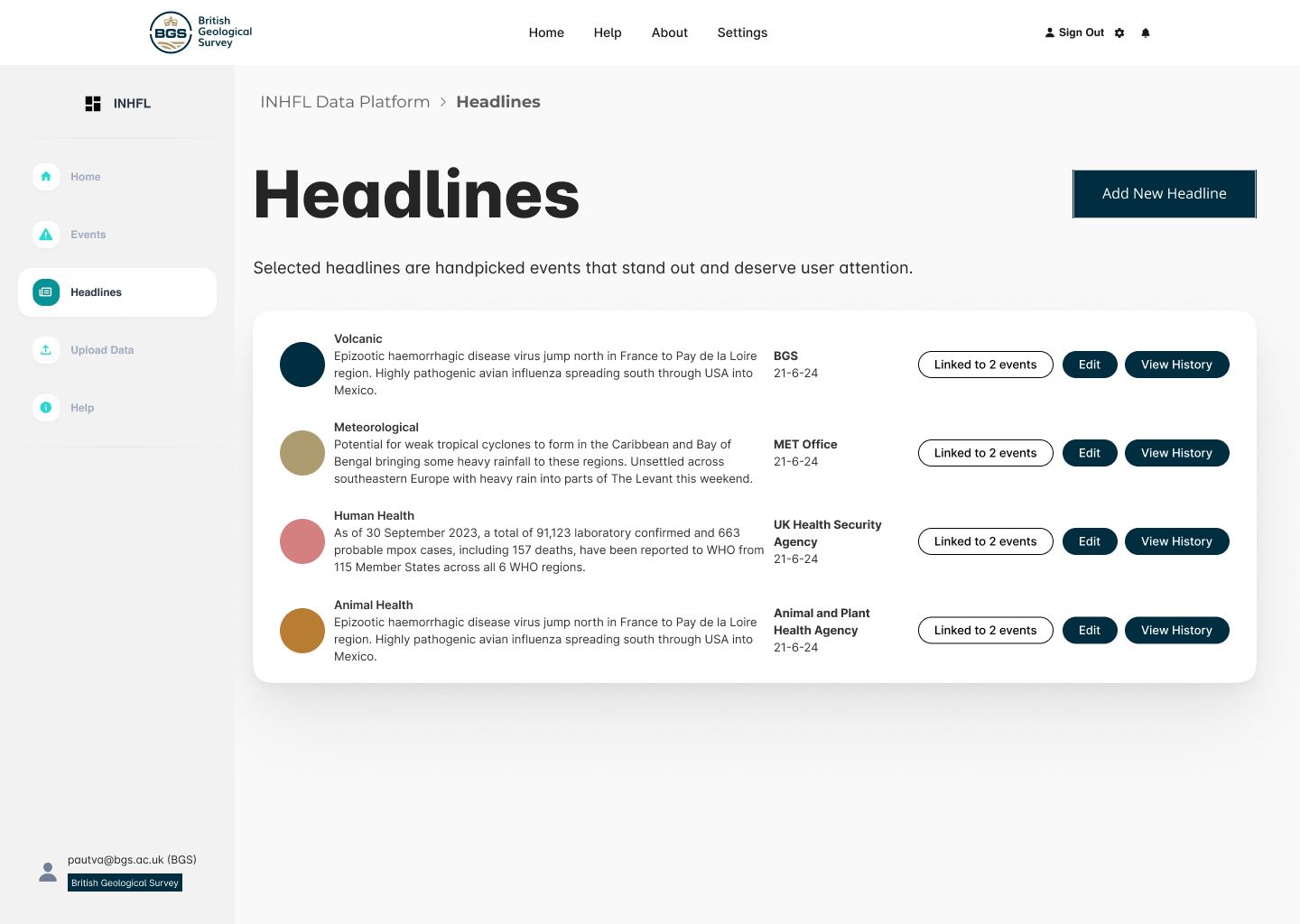Overview
We took a leading role in developing a platform to simplify global hazard monitoring. We designed the initial prototype and conducted a user testing phase with stakeholders from various science agencies.
 INHFL Login Page
INHFL Login Page
We created this document to share best practices and address common challenges in user research, development, engagement, and the integration of scientific knowledge, empowering the creation of effective DSTs that maximise their impact.
 INHFL Events Page
INHFL Events Page
Methods and Tools Used
- Ideation & Visualisation: We facilitated sketching and storyboarding exercises during an initial design sprint to encourage collaborative brainstorming and explore a wide range of potential solutions.
- Prototyping: We transformed rough concepts into interactive prototypes, providing a tangible representation for user testing.
- User Testing: A combination of in-person and remote user testing sessions, facilitated by the Useberry platform, allowed us to
 INHFL Home Page
INHFL Home Page
Lessons Learned
Overall, users find the prototype promising, valuing its design and potential. However, feedback underscores several key areas for refinement, including the need for greater clarity in labeling and hazard summaries, links to external resources for broader context, and tools for exporting data and customising the user experience according to specific needs. This highlights the importance of continuous iteration and incorporating user feedback throughout development to ensure the platform delivers maximum value to those in hazard monitoring and response.
This early prototyping and user feedback process will significantly save development time by answering critical questions upfront. The early prototyping and user feedback process will significantly save development time by answering critical questions upfront.
 INHFL Headlines Page
INHFL Headlines Page
